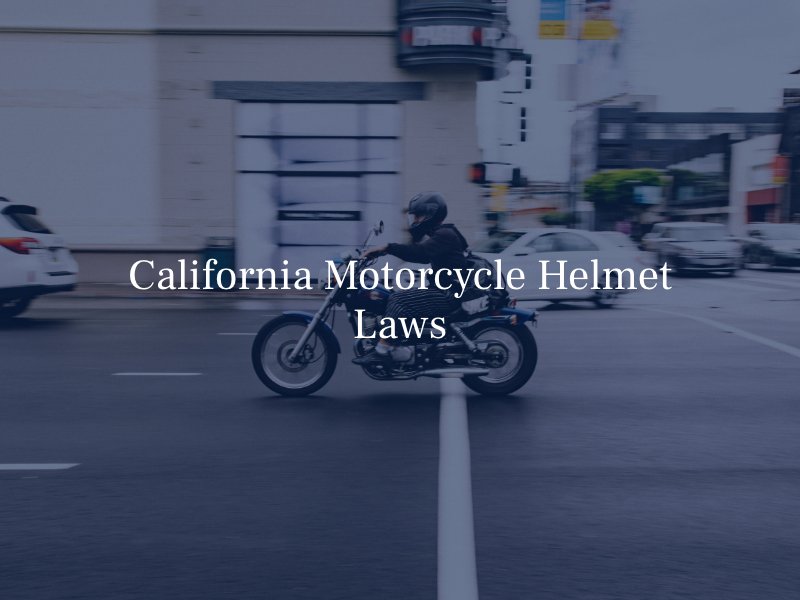California Motorcycle Helmet Laws
December 21, 2023 Posted In Motorcycle Accidents
Motorcycle safety is a paramount concern on California’s roads. One key measure aimed at protecting riders is the mandatory use of helmets by all riders and passengers.

California’s Law on Motorcycle Helmets
California Vehicle Code (CVC) 27803 outlines the state’s helmet law, which mandates that all motorcycle riders and passengers must wear a safety helmet while operating or riding on a motorcycle. The law covers various types of motorcycles, including mopeds and motorized bicycles.
The helmets must also meet the safety standards set by the U.S. Department of Transportation (DOT). Helmets meeting these standards provide essential protection in the event of a crash. To ensure compliance with safety standards, helmets sold in California must bear a DOT label. This label indicates that the helmet meets the necessary safety requirements.
Helmet Requirements
The safety standards set by the U.S. Department of Transportation for helmets are as follows:
- It must weigh at least three pounds. Unsafe helmets typically weigh only one pound or less.
- An inner liner that has a layer of firm polystyrene foam that is at least one inch thick. This may not be visible, but its thickness can still be felt.
- Sturdy chin straps with rivets.
- Any external components or decorations do not extend further than two-tenths of an inch from the helmet’s surface.
- The helmet has a manufacturer’s label with the name, model, size, month and year it was manufactured, and the type of materials used.
Counterfeit DOT stickers are sometimes placed on non-compliant helmets, which is why it is important to know all the other standards that distinguish whether a helmet is safe.
California Motorcycle Equipment Laws
- Motorcycles must be equipped with right and left mirrors. (CVC 26709)
- Handlebars cannot sit higher than six inches above a rider’s shoulders when sitting. (CVC 27801)
- A motorcycle must have working turn signals in the front and rear if the bike was built and first registered on or after January 1, 1973. (Cal. Code Regs. tit. 13 § 699)
- Exhaust systems must be compliant with the Motorcycle Anti-Tampering Act on motorcycles and exhaust systems manufactured in 2013 and after. (Senate Bill No. 435)
- Motorcycles must have a minimum of one headlight when riding at night but no more than two. (CVC 25650)
- Motorcycles must have taillights that remain on for at least 15 minutes after shutting off the engine. (CVC 24600)
- Motorcycles must have a securely fastened seat, footrests, or a sidecar to carry a passenger. (CVC 27800)
- When a motorcycle is towing a trailer, it must not go faster than 55 mph and must also stay in the right-most lane unless passing other vehicles. Motorcycles towing trailers are also not allowed in carpool lanes.
The Impact of Helmet Use on Accident Liability
Even if another party is primarily at fault for an accident, Riverside motorcycle accident attorneys suggest not wearing a helmet could impact the injured rider’s ability to recover compensation or result in a reduced settlement or award. The at-fault party may argue that the rider’s failure to use protective gear contributed to the severity of their injuries.